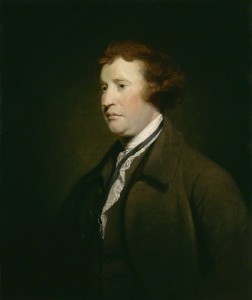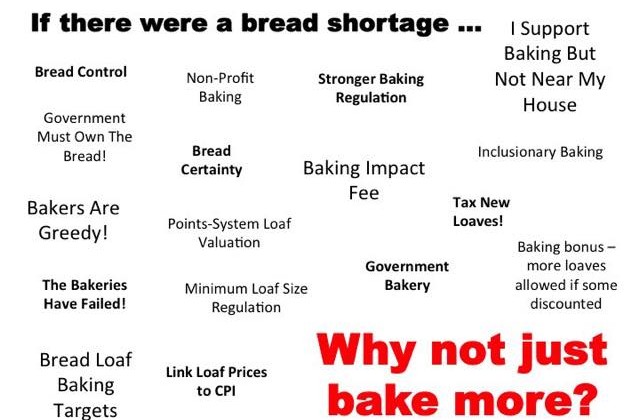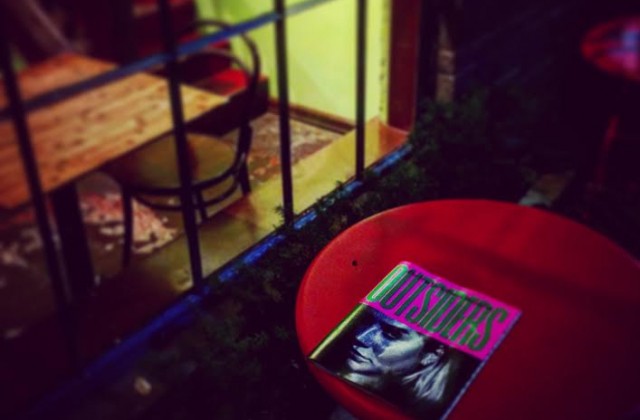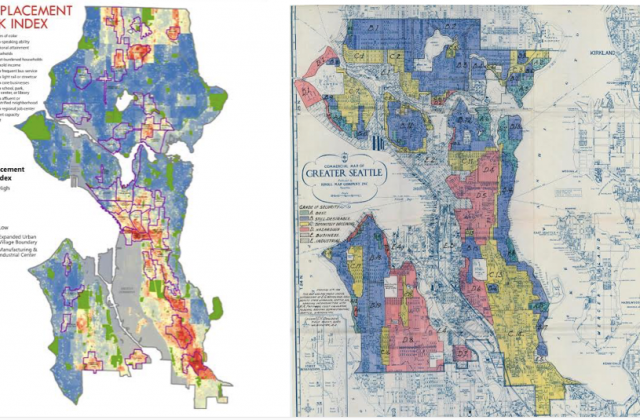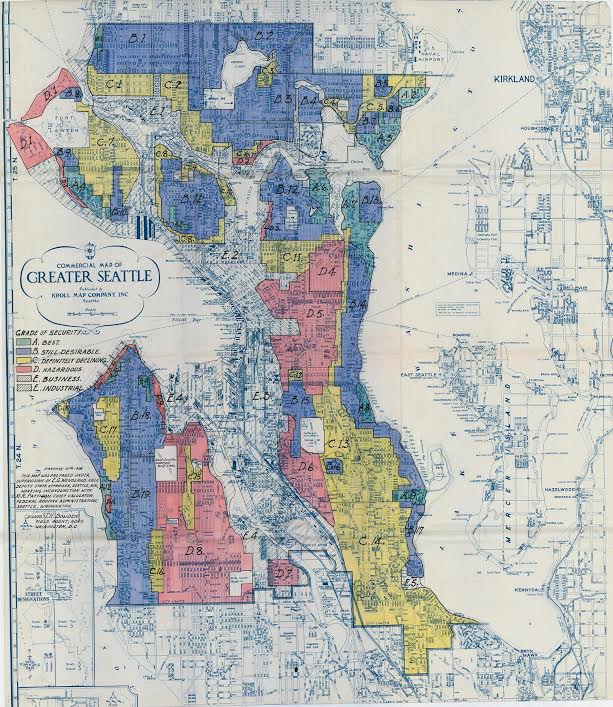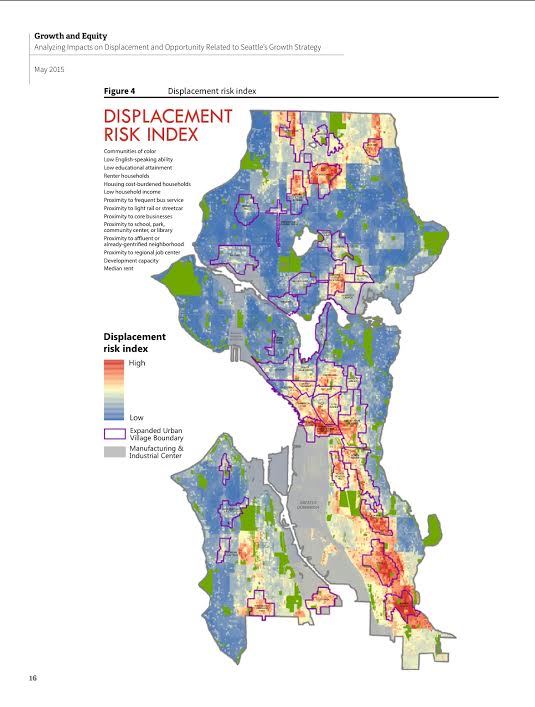Election Day: Burke, Democracy, and a Vision of the City
It’s difficult on Election Day for me to not get historical and philosophical about the big day. This year there seems to be a lot at stake for people across the country and right here at home. When I consider our democracy I can’t help but think about Edmund Burke, perhaps the most overlooked of thinkers about democracy. When I am at my most frustrated with City Hall, to the point that wish we could have a revolution, my frustration is always tempered by Edmund Burke’s take on social and political change.
The American story is frequently told as one about a group of smart, motivated and even inspired men, taking a stand against an absolute monarch, and succeeding in overthrowing that regime, inventing a new one, and implementing that in the form of a written constitution. However, this popular conception is simply false. Far from being an overthrow of an absolute monarch, the American Revolution might be better named the American Revision; the revolution was predicated on the fact that the men in question argued that they weren’t getting what they deserved under the existing English Constitution.
I’ve written much more about this elsewhere, but simply put, the motivation of the American revolution wasn’t about overthrowing tyranny as much as it was about reclaiming what was due, just like people protest and agitate in our own time in our own country because they feel their existing and undisputed rights are being violated. This kind of agitation is far from a revolution but rather an assertion of the rights due under the constitution and the law; it is an affirmation of the existing assumptions about the bedrock and foundation of the society. It is like claiming an inheritance, an analogy that will be important later.
Burke’s view on rights, freedom, and change is probably best found in his Reflections on the Revolution in France, a long letter to a young man who supports the French Revolution. Unfortunately, the Reflections are almost unreadable today both because of Burke’s 18th century writing style and his extensive historical references that are challenging to track even for someone who has studied English and European history. Here’s a quick summary.
In the Reflections, Burke challenges a mischaracterization of the Glorious Revolution in England of 1688 as being a revolution that somehow elected William and Mary King and Queen. The settlement, argues Burke, was not anything of the sort. Rather, the revolution was the establishment of liberties and the succession of the monarchy, not an election of a King by the parliament. Burke’s view is that the orderly succession of monarchs was inextricably linked with liberties. Without the predictability of orderly succession freedom would be impossible.
The people of England will not ape the fashions they have never tried, nor go back to those which they have found mischievous on trial. They look upon the legal hereditary succession of their crown as among their rights, not as among their wrongs; as a benefit, not as a grievance; as a security for their liberty, not as a badge of servitude. They look on the frame of their commonwealth, such as it stands, to be of inestimable value; and they conceive the undisturbed succession of the crown to be a pledge of the stability and perpetuity of all the other members of our constitution (41).
Furthermore, this orderly transition of power was more than a tradition but an inheritance, something that derived from many generations of evolution and something passed on from one generation to the next.
The idea of inheritance furnishes a sure principle of conservation, and a sure principle of transmission; without at all excluding a principle of improvement. It leaves acquisition free; but it secures what it acquires. Whatever advantages are obtained by a state proceeding on these maxims, are locked fast as in a sort of family settlement; grasped as in a kind of mortmain for ever. By a constitutional policy, working after the pattern of nature, we receive, we hold, we transmit our government and our privileges, in the same manner in which we enjoy and transmit our property and our lives (56).
So as unhappy as we may be with the results of our current iteration of democracy, it is still our inheritance. Burke might say that if we inherited a house we didn’t particularly like, we wouldn’t burn it down, we’d improve it even if it were at some expense. Why? Because it is something we’d have to leave to the next generation, to our successors. We have an obligation to maintain and improve what our system has given us and to hand it to the next generation in better shape than we found it.
This is why Burke bitterly opposed the French Revolution, an uprising that essentially burned down the house; meanwhile he supported the American Revolution because the founders were fighting for their inheritance of rights that belonged to them in the first place through the English Constitution. It is a distinction easily lost more than 200 years later but one that is still critical to understanding social change. This view is what makes Burke a founder of what we call today conservatism, social change that recognized the importance of tradition, the needs of today, and future generations along with a liberal view of economics.
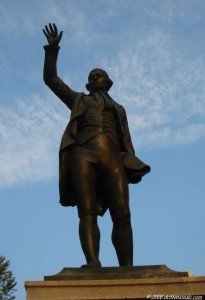
Statue of Burke in Washington D.C. The inscription on the statue is, “Magnanimity in politics is not seldom the truest wisdom.”
A Burkean view of the city would be one that would hallow a city’s history without privileging its past over its future; it would value the needs of current residents without shutting out the interests of future residents; it would recognize that efficient use of limited resources like land ought to be incentivized while excesses would be discouraged. This vision of the city would be one that would manage and improve the lives of people today and ensure others might enjoy it into the future.
Instead, our leaders today have a fearful view of the future and a nostalgic view of the past. To them, conservation means burying what we have in a mattress, slowing growth and housing production with rules and taxes. But I have hope that, over time, if we stay engaged with the system we have, no matter how imperfect, Burke’s view will prevail; it’s the only sustainable option we have.
Analogy Department: Just Bake More Bread!
If you been following my presentations in public and my writing on the topic of housing, you’ll know that I often deploy the “Bake More Bread” analogy. Arches Magazine, the regular publication of my alma matter the University of Puget Sound features me in their fall edition and I’m quoted putting it this way:
If you have a bread shortage, and the baker is only allowed to bake 10 loaves of bread, and he is slicing them thinner and thinner but people keep coming for the bread, the price is going to keep going up,” he contends. “Adding taxes to the bread or setting aside a few slices for people who have less money is not going to solve the shortage. What you need to do is let the baker bake more bread.
On Twitter, The Rent Controller has made a great text graphic of the various notions and language that the analogy can produce, like “bread control” and “inclusionary baking.” I thought it was clever, and I think the analogy speaks to people’s everyday, common sense notions about supply and demand. People, even opposed or worried about growth, understand the basic concept of scarcity.
I think they also understand the basic concept of fairness. Analogies don’t solve problems. But what they can do is create a bit of cognitive dissonance, a disruption from a syllogism that keeps leading to the wrong answer. Sometimes following an analogy all the way to it’s logical conclusion can reveal the absurdity of the idea being critiqued, like that we ought to make housing more expensive to make it cheaper. Satire functions this way as well. So if you like the graphic, post to it to Facebook and share it. It might help.
Remembering the Fundamentals: Price as Signal for Housing and Sustainability
I am always on the search for simple and short explanations of really complex and important ideas. This 4 minute video isn’t bad. It conveys quickly what this whole housing discussion is all about. First, remember, that what we want is a great city. A great city would create livable density with lots of jobs and a minimal impact on the environment and climate. That’s where price comes in. Price is a signal, and the good news is that higher housing prices are an indication that lots of people want to do a really sustainable thing, live in the city. That signal is a big arrow pointing to producers of housing to produce more. When policy interferes with that it interferes with the way markets naturally seek the “most efficient allocation of resources that can be achieved.”
One important note. This is not libertarianism. It’s not even capitalism. It’s just an explanation of how markets work, and they don’t always work to achieve that efficient allocation. When they don’t, it’s really interesting but also a challenge. If, for example, there is lots of demand but producers refuse to produce, or there aren’t enough producers, then policy makers have to ask, “Why?”
We don’t have that kind of market failure in Seattle. We have lots of willing producers and lots of demand. And, again, this is a thing to celebrate, not a crisis. It’s only a crisis when we make policy that sends weird and scrambled messages to producers and consumers by adding additional costs and barriers to production. When that happens, we essentially create a shortage. As I’ve pointed out before, markets are composed of lots and lots of people and lots and lots of discrete decisions that together send messages to lots and lots of people who make lots and lots of other decisions in response. It isn’t a monolithic thing, but a lot like the weather; we can forecast it and adapt and respond to it, but we can’t make it stop.
Finally, most of us got into the housing issue not because of price, but because we have some kind of vision for the kind of city we want; inclusive, sustainable, livable, and yes, affordable. We can’t get there without working with price signals and using what we learn to shift policy to encourage good things, and discourage bad things. In Seattle today, our policy almost always starts by seeing housing production as an impact, a bad thing. That’s the wrong read, and it results in policy that just slows production, which limits supply, and that means higher price barriers for people who want to share our city.
Here We Go Again: Opposing Growth and Housing Using Preservation
Last year we managed to face down and avoid former Councilmember Tom Rasmussen’s efforts to create what he called Preservation Districts in neighborhoods. That effort would have allowed neighbors to essentially declare a moratorium on anything changing in their vicinity by requiring what would amount to a vote on any new housing or commercial project. That proposal disappeared when Rasmussen did last year. Now, following that lead, Councilmember Lisa Herbold is proposing preserving legacy businesses. There is a survey now being fielded to gather input for legislation. Here’s the statement on the website that has been created:
Seattle is known for its unique neighborhoods, each home to a thriving landscape of locally-owned businesses that occupy an essential role in the stories and rituals that define the city. These bars, restaurants, cafés, and shops have attracted locals and visitors alike for a taste of the city’ s unique character and sense of community. This project intends to recognize these important establishments; identify elements that contribute to the culture, character, and history of Seattle; and establish goals to protect them.
It’s easy to see where this is going. Everyone has a place that they love in town whether its a retail store, a bar, or a cafe. These are places where personal history has happened, fun was had, or work got done. Believe me, I’ve worked in cafes most of my life, but this effort is setting a bad stage ahead. We don’t need to preserve “legacy businesses” but we do need more housing.
The economy of local businesses can be a rough place. There are many reasons that businesses fail. Sometimes a building owner sells their property for more housing. That’s a good thing. If we lose a business because it us unable to relocate or just decides to close, it’s unfortunate but there are some things more important than saving something that makes us, who are already here comfortable. This whole thing reminds of view preservation, and I wrote about it at my old blog, Seattle’s Land Use Code.
As Seattle grows the City Council has to make some tough decisions that will inconvenience those of use who are already here to make room for new people moving here in the future. Locking up valuable land that can produce lots of new housing in order to protect an existing view is short sighted; it’s like being against gay marriage because the lines will be too long at the licensing desk. Not liking new development at South Lake Union because it blocks views is a legitimate position. Legally and aesthetically views are something the Council can factor into their decision; but they shouldn’t.
As far as I am concerned, the same goes for the so called “legacy business.” I have had a great view of the Space Needle for many years. I love my view. But I’d give it up for new housing. Here’s what I said over the view controversy in South Lake Union, reported in the Seattle Times.
“Take my view, please,” wrote Roger Valdez, an advocate for compact, vertical communities, in his land-use blog.
Valdez argues that the public benefits of taller buildings — tax revenues, shorter commutes, less pollution — outweigh the protection of some Space Needle views. That’s especially so, Valdez says, when the 605-foot tower will still be visible from all over the city.
“It’s kind of the price of growing up,” he said.
It’s time to grow up, Seattle. These ideas about saving business are exactly wrong. What businesses need is room to grow and more customers. Not every single one of them will survive. Some of this is because of growth and some of it just happens. The funny thing is that what often make a business survive is scale, that is it gets bigger over time and can survive the cyclical shocks in the economy. Business like Starbucks will be around, but the same people who want to preserve that small cafe also harbor resentment of chain stores too, They just want everything to be the same.
As I said when one of my favorite spots, Bauhaus on Capitol Hill, shut down for new development, preservation isn’t free. And it also shouldn’t be done without factoring in the price we’ll pay in the form of less housing and less commercial space. I’ve written about solutions to this like crowd funding, and transfer of development rights. But that would actually take work, not just squashing something new. And what will surely be work is trying to get this genie back in the bottle at a time when the Council is already making it harder to build new housing.
Tale of Two Maps: Seattle Mayor and Council Draw New Redline
National Geographic has a very interesting post called, “Newly Released Maps Show How Housing Discrimination Happened.” The post highlights a project called Mapping Inequality led by Nathan Connolly, an urban historian at Johns Hopkins University and others at the National Archives that digitized maps made by the Home Owners’ Loan Corporation known as HOLC.
The HOLC was tasked with figuring out the investment risks in various cities so banks could determine where to give out loans. To do this, the organization often relied on local real estate agents and lenders, who, in many cases, judged neighborhoods based largely on their racial and socioeconomic makeup. Less affluent neighborhoods and those with significant minority and foreign-born populations got lower ratings and were colored red on the maps, a practice that came to be known as “redlining.”
One of the featured maps is of Seattle, highlighting areas considered “Hazardous” in red and others considered “Best” in green.
Interesting. Reminds me of another map that also had areas marked in red but also in blue.
This is the City of Seattle’s Displacement risk heat map. Here’s what the City says about how they put together the map in a document called, “Growth and Equity: Analyzing Impacts on Displacement and Opportunity Related to Seattle’s Growth Strategy
The displacement risk index identifies areas of Seattle where displacement of marginalized populations is more likely to occur. The access to opportunity index identifies disparities in marginalized populations’ access to some key determinants of well-being.
Table 2 and Table 3 on the following pages describe the data used in the indices. The maps that follow illustrate the variation in displacement risk and access to opportunity across the city.
“These residential decisions had decades-long consequences,” Connolly adds. “So much of the wealth inequality that exists in America is driven by inequality in real estate market and the ability to generate equity and pass it down from one generation to the next.”
